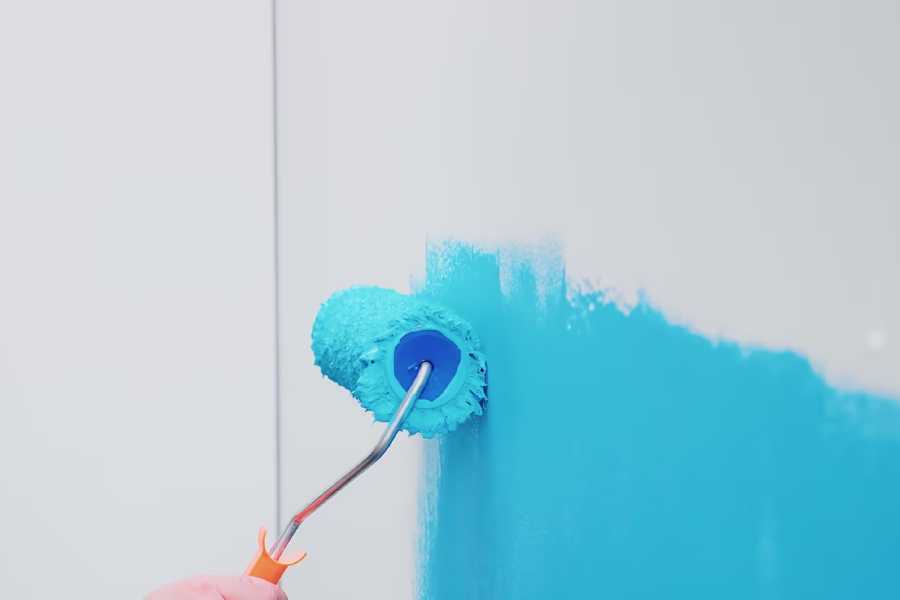Menu

Painting is a popular way to transform and refresh the look of any space, be it residential or commercial. However, despite its seemingly straightforward nature, painting projects can encounter a range of challenges that can affect the final outcome.
In this blog post, we will explore five common painting problems that homeowners and business owners in West Hartford may face and discuss how West Hartford painting contractors can address them. With their expertise and experience, these professionals are well-equipped to overcome these issues and deliver exceptional results.
In this section, we will delve into the importance of surface preparation and explore the consequences that can arise when this crucial step is overlooked. We will also discuss the professional approach taken by West Hartford painting contractors in addressing the issue of poor surface preparation.
Surface preparation is a crucial step in any painting project, and its significance cannot be overstated. Properly preparing the surface ensures that the paint adheres well, promotes better durability, and results in a smoother and more professional finish. Failure to adequately prepare the surface can lead to various painting problems, such as peeling, cracking, or an uneven appearance.
When it comes to surface preparation, West Hartford painting contractors understand that attention to detail is key. They recognize that each surface requires specific preparation techniques based on its condition, material, and location. Whether it’s interior walls, exterior siding, or a commercial building, they know that a one-size-fits-all approach won’t suffice. Instead, they assess the surface thoroughly to determine the necessary steps to achieve optimal results.
West Hartford painting contractors follow a systematic approach to surface preparation, ensuring that no corners are cut and that the surface is fully ready for paint application. Here are some key steps they take:
Achieving even coverage and avoiding streaking are essential goals in any painting project. Uneven coverage can result in a patchy and unprofessional appearance, while streaking can be unsightly and detract from the overall finish. In this section, we will explore the challenges of uneven coverage and streaking, and how West Hartford painting contractors rise above these obstacles.
Uneven coverage and streaking can be frustrating painting problems that can detract from the overall appearance of a painted surface. Understanding the causes of these issues is essential to address them effectively. Here are some common causes of uneven coverage and streaking:
West Hartford painting contractors are well aware of the challenges associated with achieving even coverage and streak-free finishes. They employ specific techniques and approaches to address these issues effectively. Here are some techniques used by West Hartford painting contractors to achieve even coverage:

Blistering and bubbling on a freshly painted surface can be both frustrating and unsightly. In this section, we will delve into the causes of blistering and bubbling and discuss how West Hartford painting contractors tackle these challenges head-on.
Blistering and bubbling refer to the formation of raised bumps or bubbles on the painted surface. These issues can be unsightly and may indicate underlying problems with the paint application. Understanding the factors that contribute to blistering and bubbling is essential in addressing and preventing these issues. Here are some common causes:
West Hartford painting contractors are experienced in addressing blistering and bubbling issues effectively. They employ solutions and preventive measures to mitigate these problems. Here are some strategies used by West Hartford contractors:
Paint peeling and flaking can be frustrating and unsightly problems that can diminish the overall appearance of a painted surface. In this section, we will explore the causes of paint peeling and flaking and discuss how West Hartford painting contractors address these challenges.
Paint peeling and flaking can be a frustrating issue that not only affects the aesthetics but also indicates underlying problems with the paint adhesion. Understanding the causes of paint peeling and flaking is essential in addressing and preventing these issues. Here are some common causes:
West Hartford painting contractors have extensive experience in addressing and preventing paint peeling and flaking issues. They employ specific solutions and practices to ensure a long-lasting and durable paint job. Here are some solutions used by West Hartford contractors:

Color fading and changes over time can be disheartening, especially when the vibrancy of a once-beautiful paint job begins to diminish. In this section, we will explore the causes of color fading and changes and highlight the expertise of West Hartford House Painting Experts in preserving the integrity of paint colors.
Color fading and changes over time can be disappointing, especially after investing time and effort in choosing the perfect color scheme. Understanding the factors that contribute to color fading and changes is crucial in addressing and preventing these issues. Here are some common causes:
West Hartford painting contractors understand the importance of color longevity and take necessary precautions to prevent color fading and changes. They employ specific strategies and techniques to help preserve the intended colors for an extended period. Here are some strategies used by West Hartford contractors:
Painting problems can arise during any project, but with the expertise of West Hartford painting contractors, these challenges can be effectively addressed. Whether it’s poor surface preparation, uneven coverage, or issues such as blistering, peeling, or mold growth, these professionals have the knowledge, skills, and resources to overcome them.
When looking for top-notch West Hartford painting contractors, look no further than the trusted and skilled professionals at West Hartford House Painting Experts. With our expertise, attention to detail, and commitment to customer satisfaction, we are the go-to experts for all your residential painting needs. Don’t settle for anything less than the best. Contact us today to schedule a free consultation.

Welcome to West Hartford House Painting Experts. We believe that we are the highest quality painting company in this community and we provide excellent customer service!